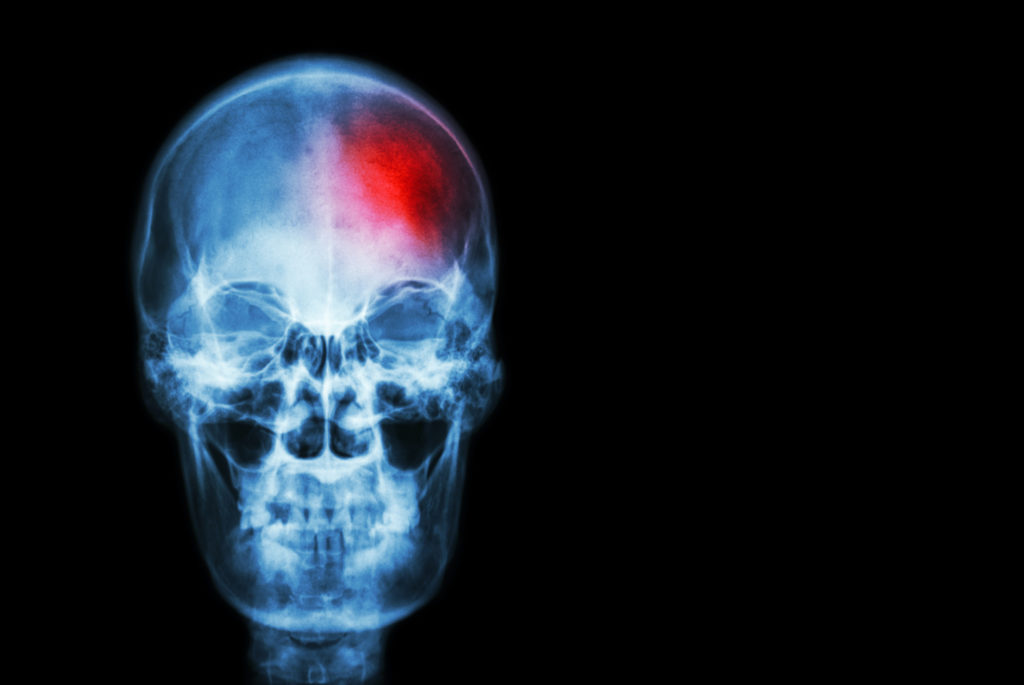Blog
The Science Behind The Causes Of Tooth Pain
That throbbing, gnawing tooth pain you experience from chomping into a particularly cold bite of ice cream or feel after taking a sip of scalding hot coffee is something that nearly all of us can identify with. If you’ve ever wonder why exactly we experience toothaches, your dentist in Hillsdale, Portland has your answer.
Basically, this discomfort comes from that fact that your teeth – unlike your nails or hair – are made up of living tissue, and pain is simply the way our brains let us know that something has gone wrong in the tissue.
Underneath the hard outer exterior of our teeth lies two other living layers of tissue. That tissue contains a bundle of nerves that send signals to the brain whenever we consume cold or hot foods, or when experiencing forces so extreme that a tooth could break.
Living Layers of Tooth Enamel
Our teeth are made up of several layers: The hard, outer surface known as enamel is made of nonliving tissue, but the interior portion of the tooth is made of hard, bony cells called dentin. Underneath that lies the pulp – soft tissue that contains a tooth’s nerves and blood vessels – which anchors the root of the tooth into the gums and extends from the root to the tooth crown.
Cavities – or holes that develop in the surface of tooth enamel – rank as the most likely cause of tooth pain. Carbohydrates – particularly those from processed foods high in sugar – are used as fuel by harmful oral bacteria to produce substances that erode away at the surface of enamel.
Once the enamel erodes, the exposed dentin registers pain in response to cold, heat or high pressure. If bacteria infiltrate the pulp cavity, they can also cause infection and inflammation to develop. Nerves in the cavity will flare up after each sip of hot coffee, lick of ice cream, and often will require a root canal – which removes the inflamed pulp of a tooth and replaces it with an inert material – to eliminate the discomfort and save the tooth.
Cracks in teeth can also cause pain when chewing as the outer fragments of the tooth rub against the pulp, irritating the sensitive interior portion of the tooth.
Gum disease can also trigger pain that resembles tooth pain. Gum disease occurs when those bacteria move under the gum line and the immune system mobilizes to destroy them. The body then gets confused when trying to distinguish between oral bacteria and gum tissue, leading it to attack its own tissue.
Gum disease ranks as the world’s most common autoimmune disease.
If left untreated, gum disease can also cause gum recession, which exposes a small portion of the roots of our teeth that also contributes to tooth sensitivity.
A History of Tooth Pain
While you might think that prehistoric man would have had worse oral health and more instance of tooth pain than today, that’s not actually the case.
Despite modern dentistry’s ability to protect the health of our teeth and gums, fossils of Homo erectus, prehistoric humans and Neanderthals all show relatively little evidence of tooth decay. Even nonhuman primates probably weren’t as prone to toothaches as people are today. Tooth decay rates in modern humans rose after the agriculture revolution and jumped quickly in the 17th century, with the increased prevalence of diets full of highly refined carbohydrates.
While fossil records do show some signs of tooth decay, the rates are significantly lower, especially among hunter-gather groups whose diets contained few carbohydrates. Some researchers have speculated that tooth decay is actually a modern disease brought on by adding foods to our diets – processed grains, sugars and carbohydrates – our bodies never evolved to safely process.
Fortunately, any tooth pain you may experience can be easily treated by scheduling an appointment to see your dentist in Hillsdale, Portland.
New Research Targets Tooth Decay Prevention in Kids
Childhood tooth decay is a problem for more than just family dental care in SW Portland. The condition has become a global concern that impacts the lives of millions of kids each year. To shed some light on just how big a problem childhood tooth decay has become, researchers in Melbourne, Australia decided to take a closer look at how the problem impacts their own community.
Nearly 2,700 Victorian children between the ages of 0 to 6 years become hospitalized each year for preventable dental conditions, the majority of which require treatment for dental decay under general anesthetic.
This revelation was one among a number covered by researchers at a symposium in Melbourne, where scientists and dentists discussed the latest evidence on children’s oral health, and the latest innovations in treatment and prevention.
Presentations at the symposium covered a wide range of topics that included epidemiology, tele-medicine, pediatric dentistry, genetics and molecular science.
Despite the range of topics, one thing became clear in the findings presented – most cases of oral disease in kids is preventable.
The goal of those at the symposium going forward was the need for further investigation into new ways of reducing oral disease in kids by using the latest scientific evidence to inform education programs and prevention, clinical practices for oral health professionals and the development of new treatments.
Preventing Childhood Tooth Decay
One of the more exciting studies covered at the symposium was a team of researchers that has spent years tracking the bacterial composition of kids’ saliva from the age of one month to 5 years. The study has discovered that infants who do not develop a mix of healthy oral bacteria (what is commonly referred to as the microbiome) have a higher risk of developing tooth decay during the next 3 to 4 years.
Researchers discovered a link between the number of bacterial species in a child’s saliva and advanced dental decay by the time a child reaches the age of 5. Researchers plan on continuing their study to gain a better understanding of how communities of oral bacteria develop in younger kids and hope to soon be able to use these biomarkers to help identify kids at a greater risk of dental disease.
Currently, the team is working to develop and test a new product designed to help prevent and treat early stage childhood tooth decay. The compound would hopefully act as prebiotics in the mouth, encouraging the growth of healthy types of bacteria that keep harmful oral bacteria in check.
The Importance of Quality Oral Health in Kids
Baby teeth rank as a vital part of a child’s oral health development. Kids who suffer from poor oral health in their baby teeth can suffer negative effects with the health of their permanent teeth and may develop a life-time of oral health problems that can have an impact on diet and general health as they enter adolescence and adulthood.
Tooth Decay Increases Risk Of Stroke
At Southwest Portland Dental, our staff of Portland family dental care experts want to ensure every patient enjoys a lifetime of healthy teeth and gums. Not only can quality oral health help improve the function and appearance of your smile, recent studies have also found that better oral health can lower your risk of a variety of chronic illnesses, including stroke. According to a new study, researchers have discovered that the oral bacteria responsible for causing tooth decay and cavities can also increase your risk of suffering certain types of stroke.
Published in the journal Scientific Reports, the study highlights the recently discovered link between oral bacteria and hemorrhagic strokes. This type of stroke occurs when blood vessels in the brain rupture, causing bleeding.
An Oral Health Connection
As part of their study, researchers hypothesized that oral bacteria tends to attach itself to blood vessels that have become weakened by high blood pressure or age. Researchers believe that oral bacteria may cause arterial ruptures in the brain, which may result in small or large hemorrhages.
Researchers also discovered that oral bacteria could increase the number of cerebral microbleeds, small hemorrhages in the brain that cause intracerebral hemorrhage and dementia.
Researchers believe this study helps to highlight the importance of oral health to the brain. This study, and other related work, have indicated that oral bacteria play a role in several types of stroke, including those that cause dementia and brain hemorrhages, stated researchers.
That people need to take care of their oral health for reasons other than just healthy teeth and gums is something that researchers hope will become clearer to the public as further research continues to explore the connections between oral and overall health. In addition to lowering the risk of stroke, researchers also cited recent studies that have established links between oral health and heart disease as another example of the mouth/body connection.
The findings from this latest study come from the examination of patients entering the hospital for acute stroke. Among patients who had suffered an intracerebral hemorrhage, 26 percent tested positive for high levels of the harmful oral bacteria Streptococcus mutans in their saliva, while 6 percent among patients suffering from other types of stroke tested positive for S. mutans in their saliva.
Researchers have now turned their attention to determining the role of oral bacteria in other diseases that affect the brain, such as Alzheimer’s disease.
Protecting Your Oral Health
Considering the impact your oral health has on your overall health, the Portland family dental experts at Southwest Portland Dental want you to understand the best practices for protecting your oral health. Brushing and flossing daily rank as the most important habits you can perform at home to lower your risk of tooth decay and gum disease. You also need to schedule regular dental checkups and exams with our Portland family dental staff to enjoy the best oral health possible.
Don't Forget To Scrape Your Tongue
As your family dentist in Southwest Portland, Dr. Howard Jarvis works to teach patients about the best practices for protecting the long-term health their teeth and gums. By far, the most important steps a patient can take to maintain and improve his or her oral health is to brush twice a day, floss daily and schedule regular checkups and cleanings. While practicing these habits will dramatically improve your oral health, there’s one more additional step that many patients overlook – cleaning your tongue.
Failing to properly clean the surface of your tongue allows the same bacteria that builds up on the surface of your teeth to collect in your mouth. Whether on our teeth or tongue, a build up of harmful bacteria in the mouth increases the risk of gum disease and tooth decay. Even in the short-term, a build up of bacteria on your tongue can certainly be the cause of some serious bad breath.
How To Clean Your Tongue
The solution to cleaning your tongue is fairly simple. Make a trip to your local pharmacy or oral health care isle at the grocery store and pick up a hard, plastic tongue scraper. Avoid purchasing softer models or trying to use the back of your toothbrush, as neither solution is hard enough to adequately clean your tongue.
If you just can’t wait to try cleaning your tongue, a teaspoon can act as a temporary solution. Once you have the right tool, reach to the back of your tongue and rake across the fuzzy surface, also referred to as the papillae, several times to bring any plaque to the front.
After thoroughly scrapping your tongue, use a mouthwash that contains hydrogen peroxide to pull out any remaining matter before rinsing. Try to clean your tongue at least twice a day, ideally once in the morning and again at night. Oral bacteria multiplies quickly in warm, moist and dark conditions like what exists in your mouth while asleep. Cleaning your tongue in the morning will help to remove any bacteria that builds up while you’re asleep, and scrapping at night helps to remove any bacteria that builds up during the day.
As an additional bonus, a Belgian study found that an individual’s sense of taste will improve after about two weeks of regularly cleaning his or her tongue.
The Road To Better Oral Health
In addition to brushing, flossing and scrapping, it’s important that patients also schedule regular checkups and cleanings with your family dentist in Southwest Portland, Dr. Howard Jarvis. Regular cleanings allows our staff of gentle dental hygienists the opportunity to remove built up plaque from along the gum line and surface of your teeth, while exams provides Dr. Jarvis with the chance to spot any signs of decay or gum disease early on during the easy to treat stages. Failing to schedule regular visits could cause permanent oral damage or necessitate potentially expensive or uncomfortable oral procedures to treat.
If you have any questions about the best practices for protecting your oral health, feel free to ask during your next appointment at Southwest Portland Dental.
Squeezable Snacks Could Hurt Kids' Teeth
As a provider of family dental care in SW Portland , Dr. Howard Jarvis understands that for parents on the run, finding any kind of time saving shortcut can make a huge difference when trying to meet the demands of an always hectic schedule. To satisfy the demands of busy parents, a number of baby food companies have release squeezable pouches loaded with pureed organic foods in a variety of ingenious combination such as barley, berry, and plum.
Packaged in decorative foil pouches, these products feature built-in feeding tips that allow children to eat directly from the pouch. While these pouches generally cost significantly more than a traditional jar of baby food, many parents are willing to spend the extra money because they don’t require heating, refrigeration, or even a spoon to eat with. These pouches are even more appealing to children who prefer to eat on the run rather than sit still.
Since these products first hit supermarket shelves about five years ago, they have become common sights at park, playgrounds, daycares, and backseats of minivans. However, despite the benefits squeezable pouches offer parents and kids, all of the at slurping may have a downside to a child’s still developing oral health.
Protecting Your Child’s Teeth
The American Academy of Pediatric Dentistry recommends that parents transition their young children from drinking out of bottle to drinking out of a glass; skipping the use of a sippy cup altogether.
When children use sippy cups filled with sugary beverages, the liquid begins pooling around their baby teeth. The sugar in these liquids provide plaque, a sticky bacteria that grows in the mouth, the fuel it needs to produce acids that damage a child’s teeth. When this behavior becomes consistent, these plaque acids can cause tooth decay, which could lead to early tooth loss.
Researchers at the AAPD warn parents that squeezable pouches present the same risk to the health of a child’s teeth as the use of sippy cups. However, due to the consistency of the foods found in squeezable pouches, they might actually present an even bigger problem for kids if allowed to sit on teeth for prolonged periods of time. Because the types of foods found in pouches tend to stick to a child’s teeth, they provide bacteria an extended opportunity to buildup.
Fortunately, parents can help to minimize the effects these types of food have on their child’s teeth by making sure to brush at least twice a day, and having their children rinse with water after using a squeezable pouch.
Risk of Injury
Unlike more traditional forms of feeding, portable squeeze pouches present a potential injury risk to children should the plastic feeding tips jam into their teeth or gums while running around eating.
While these type of plastic pouches are too new to the market for any conclusive data, a recently published survey does suggest some risk.
Researchers at Columbus’ Nationwide Children’s Hospital conducted a national survey that found feeding products that feature similarly shaped mouthpieces could present a danger to young children. The study examined emergency room records of over 45,000 children under the age of three between 1991 and 2010 who were admitted after injuring themselves with a sippy cup, pacifier, or bottle. According to the records, these type of injuries occurred most frequently when the child was running around while holding the object.
While the risk these products present to the health of a child’s teeth probably don’t outweigh their convenience, parents do need to make sure they keep a careful eye on their children when eating from a pouch and to practice quality oral hygiene by brushing their child’s teeth twice a day and by scheduling regular appointments with family dental care Portland provider Dr. Howard Jarvis.





